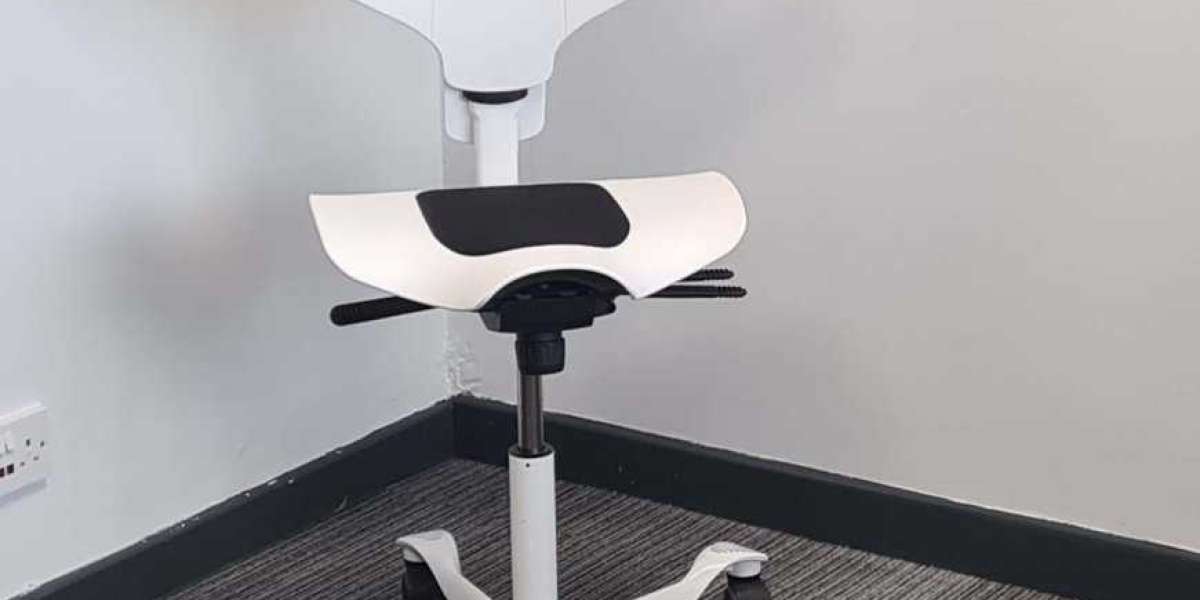In today’s fast-paced work culture, where long hours at desks are the norm, investing in the right chair isn’t just about comfort — it’s about health, focus, and performance. Whether you’re working from home or in an office, ergonomic chairs have become essential for anyone who values good posture and long-term well-being. But how exactly do ergonomic chairs help, and why are they considered the gold standard for modern workplaces across the UK?
This guide explores the science behind ergonomic seating, the benefits for your body and productivity, and what to look for when choosing the perfect ergonomic chair.
What Are Ergonomic Chairs?
An ergonomic chair is designed to support the natural curve of your spine, reduce pressure on key areas like the lower back and neck, and encourage proper sitting posture. Unlike traditional office chairs that prioritise appearance or basic comfort, ergonomic chairs are built with human anatomy in mind.
They feature adjustable components — including seat height, lumbar support, armrests, and headrests — allowing you to customise your chair for optimal posture and comfort throughout your working day.
In short, ergonomic chairs adapt to you, not the other way around.
How Do Ergonomic Chairs Help?
The benefits of ergonomic chairs go far beyond simple comfort. Here’s how they truly make a difference to your body and mind:
1. Promotes Better Posture
One of the biggest issues office workers face is poor posture. Hunching over a desk for hours can lead to slouching, rounded shoulders, and strain on the spine.
Ergonomic chairs are designed to promote a healthy, upright posture by supporting the natural “S” shape of your spine. Adjustable lumbar support helps maintain the correct alignment of the lower back, while features like headrests and armrests reduce shoulder tension.
Over time, you’ll notice improved posture, less fatigue, and reduced risk of developing chronic back pain.
2. Reduces Back, Neck, and Shoulder Pain
Back pain is one of the most common complaints among office workers in the UK, often caused by prolonged sitting in poorly designed chairs.
Ergonomic chairs help by distributing body weight evenly and maintaining spinal alignment. The adjustable backrest and lumbar support ensure that your lower back is well-supported, preventing the spine from collapsing into unhealthy positions.
Many ergonomic chairs also come with neck and head support, which helps reduce stiffness in the shoulders and upper spine — a common problem for people working long hours in front of a screen.
3. Enhances Circulation and Reduces Fatigue
When you sit for extended periods, poor seating can restrict blood flow to your legs, causing numbness, swelling, or even deep vein thrombosis (DVT) in severe cases.
Ergonomic chairs are designed with seat edges that slope slightly downward (a waterfall edge), which helps improve blood circulation. This feature prevents your thighs from being compressed and encourages better oxygen flow throughout the body.
Better circulation means more energy, less fatigue, and improved focus during the workday.
4. Increases Productivity and Focus
Comfort directly impacts performance. Studies have shown that employees who use ergonomic furniture experience less discomfort, take fewer breaks, and maintain better concentration.
When your body feels supported and free of pain, your mind can focus on the task at hand. Ergonomic chairs reduce distractions caused by discomfort, allowing you to stay engaged and productive for longer periods.
For remote workers or hybrid employees, investing in a quality ergonomic chair can make your home office feel just as professional and comfortable as any modern UK workplace.
5. Long-Term Health Benefits
Consistent use of ergonomic chairs can prevent long-term musculoskeletal issues. Poor posture and spinal misalignment, if left unchecked, can lead to chronic back pain, carpal tunnel syndrome, and even joint degeneration.
By supporting natural body mechanics and encouraging healthy posture, ergonomic chairs help preserve your body’s structural health — a wise investment in your long-term well-being.
Key Features to Look for in an Ergonomic Chair
If you’re planning to buy an ergonomic chair, here are the most important features to consider:
- Adjustable Seat Height: Allows your feet to rest flat on the floor with knees at a 90-degree angle.
- Lumbar Support: Proper lower back support helps maintain the natural curve of your spine.
- Seat Depth and Width: The chair should comfortably accommodate your body shape without pressure behind the knees.
- Backrest Tilt and Recline: Encourages movement and relieves pressure on your spine throughout the day.
- Armrests: Adjustable armrests prevent shoulder strain and support relaxed posture.
- Headrest (optional): Ideal for supporting your neck and reducing tension, especially during long working hours.
- Breathable Material: Mesh or fabric seats provide ventilation and keep you cool during long sessions.
Why Ergonomic Chairs Are Worth the Investment
While ergonomic chairs may come at a higher price than standard office chairs, they pay for themselves through improved comfort, reduced sick days, and enhanced productivity.
Think of it as an investment in both your health and performance. A well-designed ergonomic chair can last for years, providing continuous support for your spine, posture, and overall well-being.
Employers across the UK are increasingly prioritising ergonomic furniture as part of workplace wellness programmes. It’s not just about ticking a box — it’s about creating a healthier, more efficient working environment.
Final Thoughts
So, how do ergonomic chairs help? They go beyond comfort — they promote health, focus, and longevity. Whether you’re an office professional, student, or remote worker, an ergonomic chair is one of the smartest upgrades you can make to your workspace.
By supporting proper posture, reducing pain, and boosting productivity, ergonomic chairs empower you to perform at your best every day.
If you haven’t yet experienced the difference, now is the perfect time to make the switch — because sitting right is just as important as working hard.








